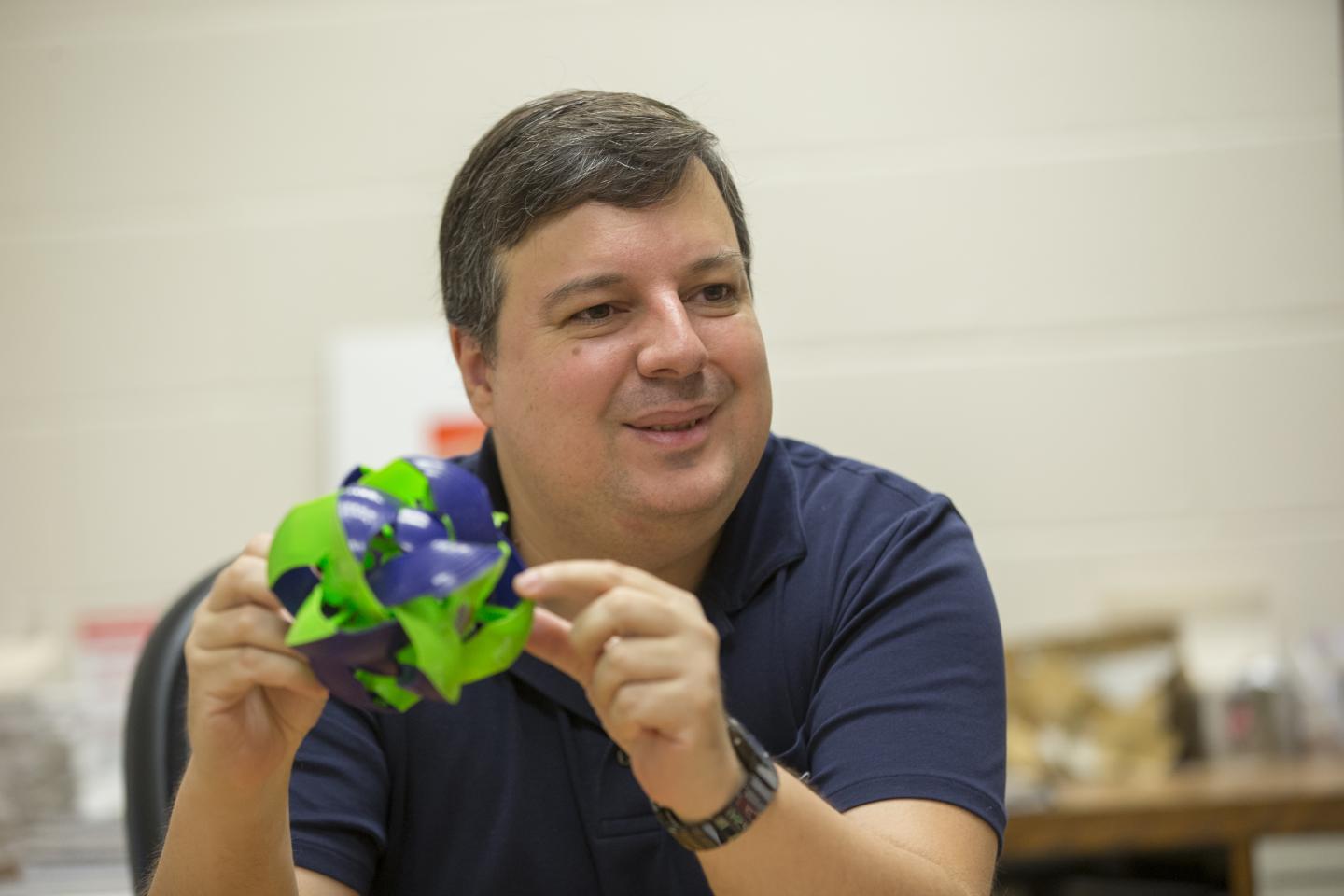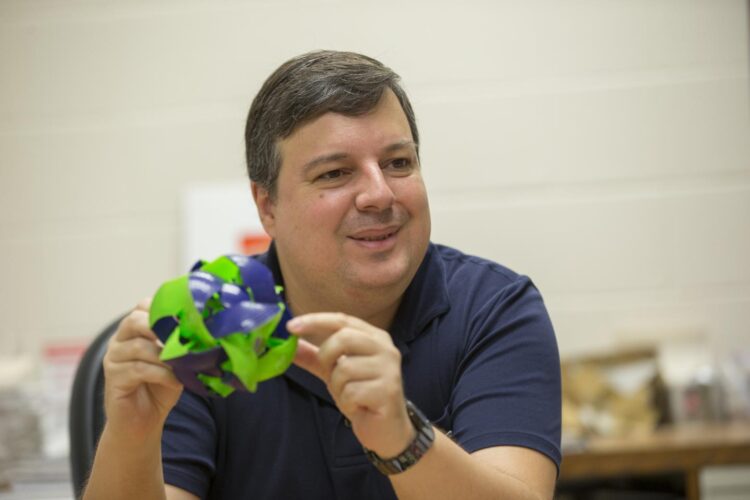Subatomic particles are no-shows in experiments, increasing doubts about their existence

Credit: Joseph Fuqua II/UC Creative + Brand
University of Cincinnati physicists, as part of an international research team, are raising doubts about the existence of an exotic subatomic particle that failed to show up in twin experiments.
UC College of Arts and Sciences associate professor Alexandre Sousa and assistant professor Adam Aurisano took part in an experiment at the Fermi National Accelerator Laboratory in search of sterile neutrinos, a suspected fourth “flavor” of neutrino that would join the ranks of muon, tau and electron neutrinos as elementary particles that make up the known universe.
Finding a fourth type of neutrino would be huge, Sousa said. It would redefine our understanding of elementary particles and their interactions in what’s known as the Standard Model.
Researchers in two experiments called Daya Bay and MINOS+ collaborated on complementary projects in an intense effort to find sterile neutrinos using some of the world’s most advanced and precise tools.
“We apparently don’t see any evidence for them,” Aurisano said.
The study was published in the journal Physical Review Letters and was featured in Physics Magazine, published by the American Physical Society.
“It’s an important result for particle physics,” Sousa said. “It provides an almost definitive answer to a question that has been lingering for over 20 years.”
The research builds on previous studies that offered tantalizing possibilities for finding sterile neutrinos. But the new results suggest sterile neutrinos might not have been responsible for the anomalies researchers previously observed, Aurisano said.
“Our results are incompatible with the sterile neutrino interpretation of the anomalies,” he said. “So these experiments remove a possibility – the leading possibility – that oscillations into sterile neutrinos solely explain these anomalies.”
Neutrinos are tiny, so tiny they can’t be broken down into something smaller. They are so small that they pass through virtually everything – mountains, lead vaults, you – by the trillions every second at virtually the speed of light. They are generated by the nuclear fusion reactions powering the sun, radioactive decays in nuclear reactors or in the Earth’s crust, and in particle accelerator labs, among other sources.
And as they travel, they often transition from one type (tau, electron, muon) to another or back.
But theorists have suggested there might be a fourth neutrino that interacts only with gravity, making them far harder to detect than the other three that also interact with matter through the weak nuclear force.
The experiment Daya Bay is composed of eight detectors arrayed around six nuclear reactors outside Hong Kong. MINOS+ uses a particle accelerator in Illinois to shoot a beam of neutrinos 456 miles through the curvature of the Earth to detectors waiting in Minnesota.
“We would all have been absolutely thrilled to find evidence for sterile neutrinos, but the data we have collected so far do not support any kind of sterile neutrino oscillation,” said Pedro Ochoa-Ricoux, associate professor at the University of California, Irvine.
Researchers expected to see muon neutrinos seemingly vanish into thin air when they transitioned into sterile neutrinos. But that’s not what happened.
“We expected to see muon neutrinos oscillating to sterile neutrinos and disappear,” Aurisano said.
Despite the findings, Aurisano said he thinks sterile neutrinos do exist, at least in some form.
“I think sterile neutrinos are more likely than not to exist at high energies. At the very beginning of the universe, you’d expect there would be sterile neutrinos,” he said. “Without them, it’s hard to explain aspects of neutrino mass.”
But Aurisano is skeptical about finding light sterile neutrinos that many theorists expected them to find in the experiments.
“Our experiment disfavors light or lower-mass sterile neutrinos,” he said.
Sousa said some of his research was truncated somewhat by the global COVID-19 pandemic when Fermilab shut down accelerator operations months earlier than expected. But researchers continued to use massive supercomputers to examine data from the experiments, even while working from home during the quarantine.
“It’s one of the blessings of high energy physics,” Aurisano said. “Fermilab has all the data online and the computing infrastructure is spread out around the world. So as long as you have the internet you can access all the data and all the computational facilities to do the analyses.”
Still, Aurisano said it takes some adjusting to work from home.
“It was easier when I had dedicated hours at the office. It’s a challenge sometimes to work from home,” he said.
###
Media Contact
Michael Miller
[email protected]
Original Source
https:/
Related Journal Article
http://dx.





